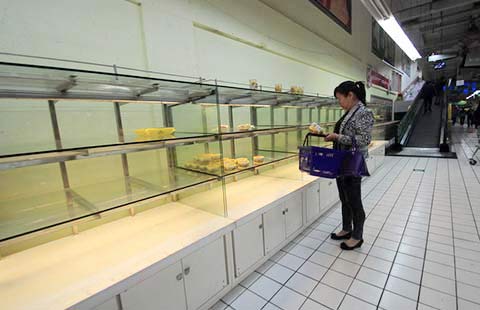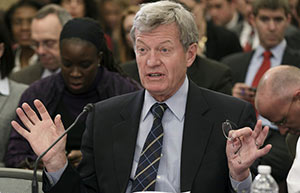Scandal shows IPOs a free-for-all
By Hong Liang (China Daily) Updated: 2014-01-20 07:23
The Aosaikang IPO debacle has revealed the extent of problems in the Chinese stock market, which apparently caught the watchdog agency by surprise.
After many months of preparation, highlighted by the introduction of a fresh approach augmented by a new set of rules, the China Securities Regulatory Commission, or CSRC, lifted the year-long moratorium on IPOs, allowing a host of companies to join the rush to raise money from the already beleaguered stock market.
First out of the gate was Aosaikang. But it didn't get far before the CSRC gave the order to abort because of glaring irregularities.
The pricing of Aosaikang's new shares, at nearly 70 times its earnings, was totally out of line with the market's average price-to-earnings ratio of less than 15 times. What's more, the exceptionally small proportion of new shares issued in the company's IPO raised the question of whether the owners were seeking to unload their holdings rather than to raise cash to grow the company.
In addition, part of the information disclosed in the company's prospectus was challenged by a number of analysts and commentators who pointed out inconsistencies in the company's market share claims. Their comments were widely reported by the media.
The CSRC has since ordered the cancellation of all the IPOs that were previously scheduled for January and decreed addition rules to prevent further abuse. On its website, the CSRC reminded market operators that a market oriented approach to IPOs should never be taken as a signal of a free-for-all.
Before falling flat on its face in the Aosaikang fiasco, the CSRC was understandably proud of its efforts to overhaul the IPO regulations, which apparently bestowed the confidence for it to lift the ban despite the objections of many personal investors.
Frustrated by the prolonged market slump, these investors have blamed IPOs for draining market liquidity by allowing business owners to cash out. The new IPO rules promulgated by the CSRC before the lifting of the ban have done little to restore investors' confidence.
While nobody questions the intent of the CSRC's initiatives, some analysts have raised concerns that the market practitioners, including stockbrokers, investment advisors, corporate executives and professional service providers, may not be ready for the new ways of doing business. They are used to the old system under which pricing and other key elements of a transaction were pretty much dictated by the authorities rather than determined by the market.
The Aosaikang debacle showed up the inadequacies of, among other things, the market pricing mechanism. The failure of the company's management and its advisors to identify the discrepancy and take the necessary steps of redress it has also drawn much criticism from investors.
The market mechanism obviously failed its first test under the new regulatory regime. The CSRC has taken the right step in calling a halt to further IPOs, at least for now. It should take time to work with the various market operators to clarify the responsibilities and obligations of every party in an IPO transaction and ensure that the system can work properly before subjecting it to further tests.
The cost of failure in experimenting with financial reform is hard to predict and contain because so much money is involved in one single throw.
The author is a senior editor with China Daily.
- NHTSA says finds no 'defect trend' in Tesla Model S sedans
- WTO rare earth ruling is unfair
- Amway says 2014 China sales may grow 8%
- President Xi in Europe: Forging deals, boosting business
- CNOOC releases 2013 sustainability report
- Local production by Chery Jaguar Land Rover this year
- Car lovers test their need for speed in BMW Mission 3
- China stocks close mixed Monday

















